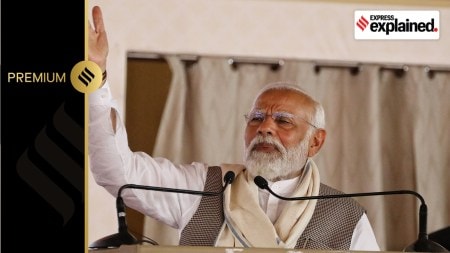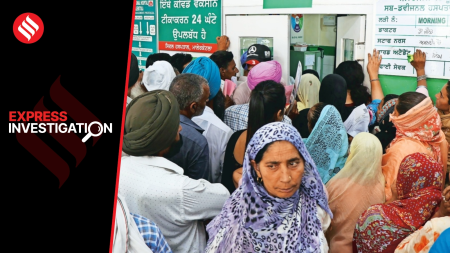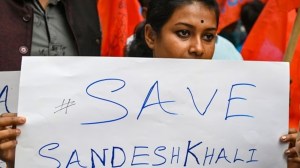- India
- International
India’s fall in fertility rate may be a boon in disguise. Here’s why
Decline in population growth would increase the amount of capital resources and infrastructure available in per capita terms. Additionally, it would permit the relocation of resources for the education and skill development of children rather than expanding coverage
 The Asia 2050 report, prepared by the Asian Development Bank, predicts that the 21st century belongs to Asia, with India being a major actor. This is very much possible, but not inevitable, warns the report. (C R Sasikumar)
The Asia 2050 report, prepared by the Asian Development Bank, predicts that the 21st century belongs to Asia, with India being a major actor. This is very much possible, but not inevitable, warns the report. (C R Sasikumar)The projection by the UN Population Division is that India will have a population of close to 1.7 billion by 2065 before it starts declining. This overwhelming size has overshadowed the debate on other aspects like age structure, quality of the population, and its contribution to economic growth. Now we have a report from The Lancet where the total fertility rate (TFR) for India is projected to go down to 1.29 by 2051. This estimate is based on a complex demographic modelling, done for 204 countries as part of the global burden of disease study. Though this is an estimate within a range of 0.97 to 1.61, given the scientific rigour in their methodology, it opens up interesting pointers to the direction of India’s population dynamics.
The total fertility rate used for projecting the population by the government’s technical group (1.94 for the period 2021-2025 and declining to only 1.73 during 2031-2035) and that used by the UN are higher than those thrown up by the study in The Lancet. The latter is even higher than what one would estimate using NFHS 5 data. All these imply that our population may stabilise below the 1.7 billion mark much before 2065.
Several factors have jointly triggered a demographic transition in India, the rapid pace of economic development, particularly since the early years of the present century, being the key one. Lower infant and child mortality rates reducing the need to have a large family for old-age support, would be the other factor, backed by the rise in women’s education and work participation rates. Improvement in housing conditions and the old-age security system are the other contributing factors.
The first impact of the rapid decline in TFR is a fall in the dependency rate and a larger share of working adults in the population, leading to an overall surplus income which can accelerate economic growth and lead to positive intergenerational transfers. However, this will subsequently result in a larger share of the elderly dependent population, as is noted in China, Japan and several European countries. The dependency ratio, taking the young and the old as a fraction of the percentage of the working-age population, is projected to go up from 13.8 in 2011 to 23 in 2036 for India.
It must, however, be noted that the decline is uneven across states and it will take a decade before all states, especially large ones like Uttar Pradesh, Bihar and Jharkhand, achieve the replacement level fertility, which, in the long run, would ensure stabilisation of population. Furthermore, the inter-district variations are even higher. Odisha, the state experiencing the fastest transition among the poor states, will achieve TFR as low as 1.51 by 2036 and yet districts like Kandhamal, Nabarangpur and Rayagada will have it much above the replacement level, modelled on the data from NFHS 5. It will, therefore, be premature to take an alarmist view of the transition, even if it is somewhat faster than what was projected earlier.

Undoubtedly, the demographic transition will have a positive impact on several states in the coming years through an increase in labour productivity. It would do so via three channels. First, the decline in population growth would increase the amount of capital resources and infrastructure available in per capita terms. Second, the reduction in fertility would permit the relocation of resources for the education and skill development of children rather than expanding the coverage for achieving universalisation. Third, it would affect the age distribution of the population, increasing the fraction of the labour force in the population, although for a limited period, which would accelerate the growth of the overall economy.
While, in the absence of any recent population count, the future size and structure of the Indian population remain in the realm of projections, emerging population issues have serious implications for policy, particularly for skill development for women and other underprivileged groups.
A declining TFR will lead to a situation where the number of children enrolling in schools is lower, as is already happening in states like Kerala. This could improve educational outcomes without additional resources being spent by the state. Attention must, however, shift to middle and higher education where the drop-out rates are very high. Substantial resources must be allocated to technical and professional education before the window of demographic opportunity closes.
A major factor responsible for the low participation of women in the workforce is their engagement in childcare at an age when they should be in the labour force. With less time needed for childcare, one would expect more women to join the labour force in the coming decades. The larger share of women in MNREGA employment in the southern states is a pointer.
The shifting of the workforce from agriculture to industries and services would balance the sectoral distribution. Skill development among SCs/STs and religious minorities can ensure there is no dearth of labour in the modern growing sectors. Much of the incremental workforce will come from the gradual process of the withering away of traditional activities.
The north-south movement of labour has already emerged as a major factor, creating spatial balance in the labour market. This would get an impetus with the modern sectors in the southern states, and Gujarat and Maharashtra, soliciting cheaper labour from the northern states. This, over the years, must result in improved working conditions, elimination of wage discrimination for migrant workers and the mitigation of security concerns in the receiving states through institutional safeguards.
The Asia 2050 report, prepared by the Asian Development Bank, predicts that the 21st century belongs to Asia, with India being a major actor. This is very much possible, but not inevitable, warns the report.
It emphasises sectoral and spatial redistribution of the workforce, skill development and increase in the work participation rate of women, all compensating for the declining share of the working age group in the population.
Understandably, improvement in life expectancy would be associated with problems of the aged and increased burden of disease, resulting in high demand for health care facilities. India must accept these challenges to make the most of the opportunity if it comes a bit ahead of the predicted time.
Kundu is professor emeritus, L J University, Ahmedabad and Mohanan is former member, National Statistical Commission
EXPRESS OPINION
More Explained
Apr 04: Latest News
- 01
- 02
- 03
- 04
- 05











































